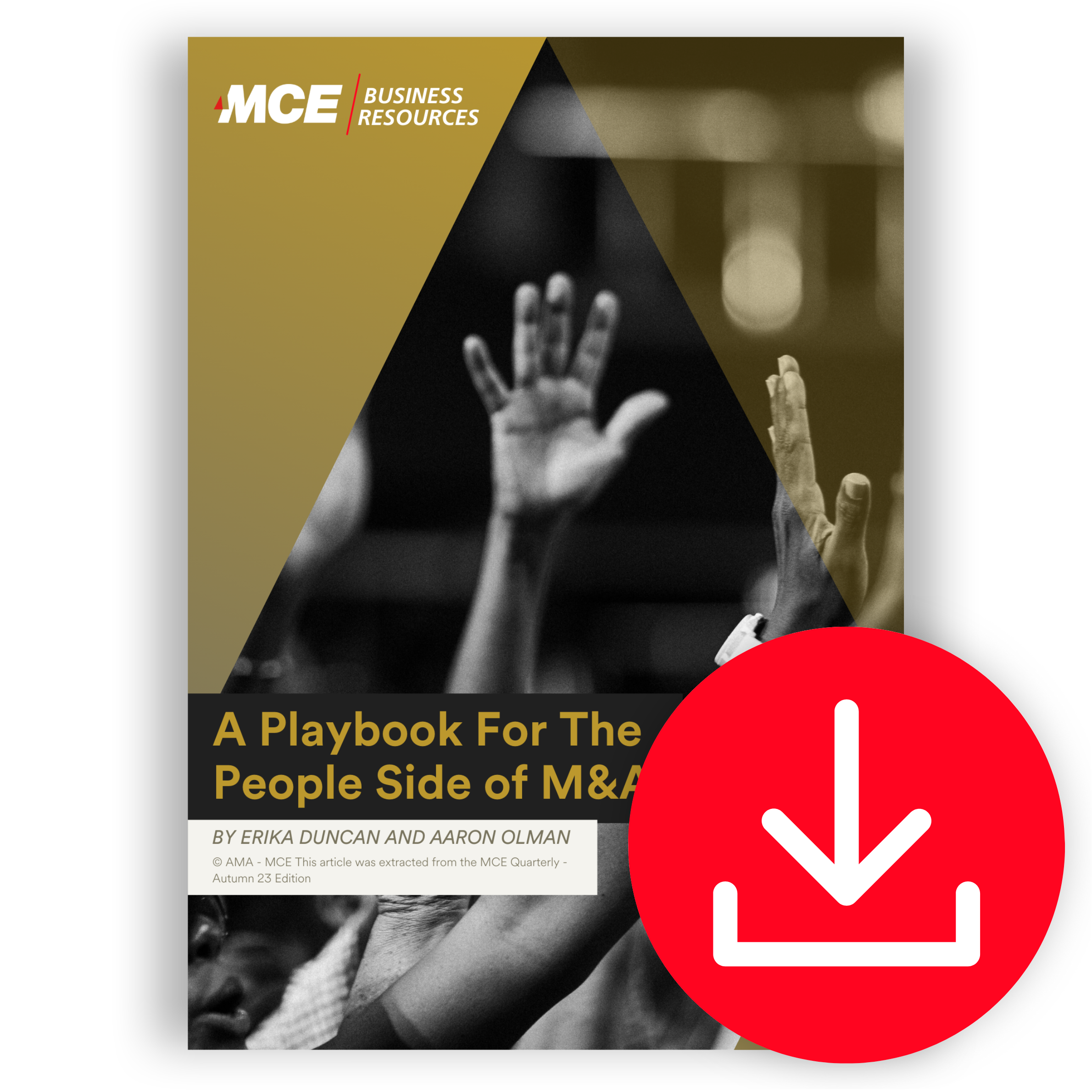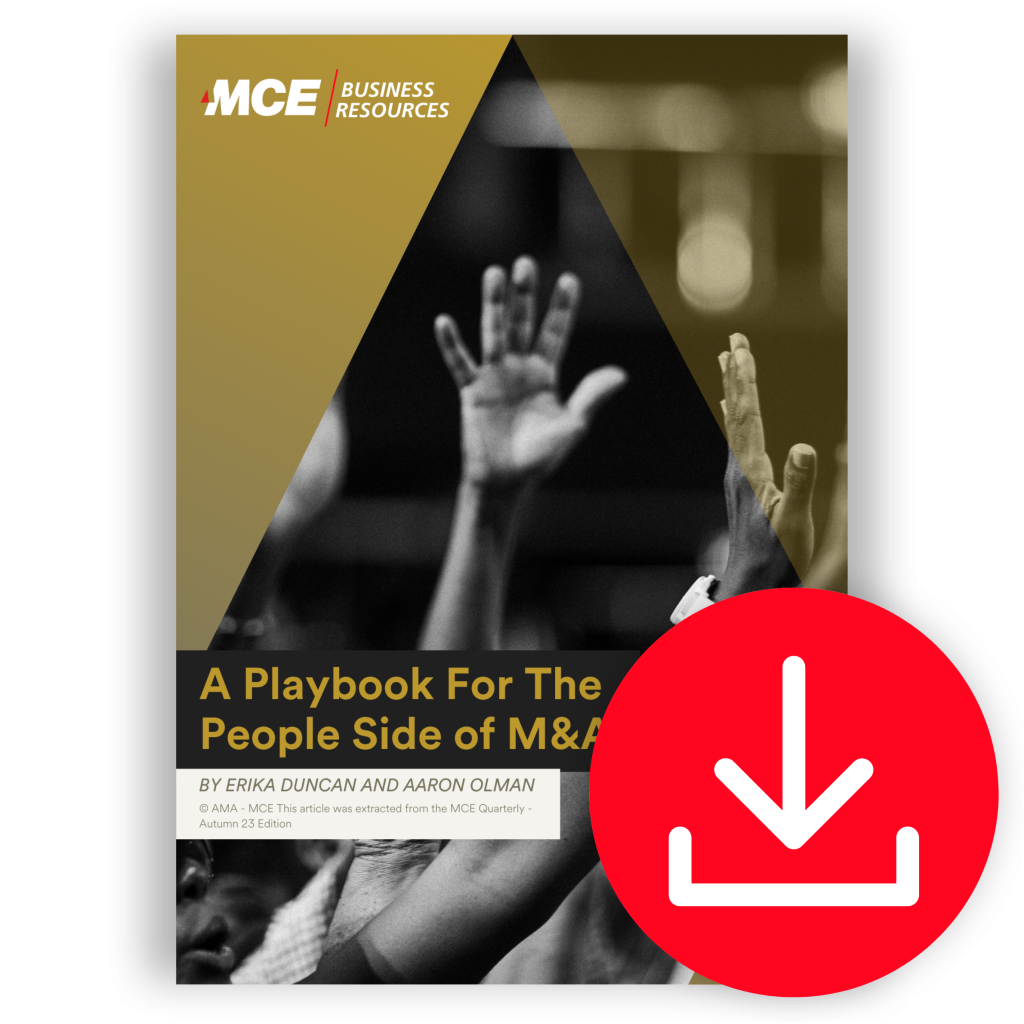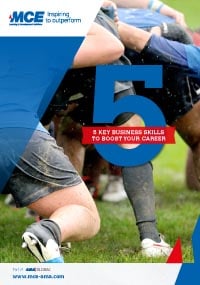
Companies do not typically embark on high-stakes deals as significant as mergers and acquisitions without considerable assessment of the inherent advantages, disadvantages, risks, and opportunities.
Organizations have incorporated increasing rigor into every phase of managing the deal—from identifying the target through to integration. Finance, legal, and business development leaders typically vet and analyze the target company from multiple angles. Increasingly, HR is asked to participate in the due diligence stage to gather and assess the skills and roles of the target’s workforce. Still, we continue to see a high number of deals that fail to yield the desired results. The reasons for failure vary, but disproportionately the crux of the problem lies in underestimating the role of human capital.
All the finances may be in order and show great signs of future growth, but future success can be erased by a gap in understanding how you will leverage your greatest futurestate asset (including the costs and risks)—the talent. The company does not sufficiently consider how it will leverage the future new profile of its talent when strategic people leaders are not at the table until a deal is finalized.
INVOLVING PEOPLE LEADERS DURING DILIGENCE IS PARAMOUNT
Many organizations fail to recognize the importance of involving people leaders during the diligence phase or simply don’t possess the requisite strategic people leaders and related skill sets internally to do so. What will the future structure of the company look like? This question (and the answer to it) is typically overlooked in the due diligence process, and when the time comes to integrate the new company, we wonder why it does not fit within the current structure.
If the overarching blueprint—the end-state design for how people will fit in the future new company—is not considered, this could halt any growth and potentially cause a decline if the expectations are not set out from the very beginning.
However, involving people leaders during due diligence changes the conversation. This involvement is paramount to a holistic pre- and post-close M&A playbook.
CULTURE IS AN OUTPUT
Leaders often speak of culture and look to HR to quarterback a successful cultural transition through a merger or acquisition. But culture is an output of daily decisions, leadership behavior, and the workplace climate and environment.
To help drive culture, HR leaders must be part of the conversation early enough in the process to wrestle with the key questions that must be considered to form the culture with intention. Recognizing strengths, weaknesses and, most important, opportunities maximizes the likelihood of success in culture assimilation and business outcomes post-deal. The alternative comes with a steep cost and sometimes irreparable harm.
Download the full article to know more.
Download Now
About The Author
Erika Duncan and Aaron Olman are co-founders and human capital advisors for People on Point. Duncan is an experienced corporate human resource officer with a demonstrated history of working in the hospital and health care industry, and is skilled in HR strategy, organizational design, M&A/integration, HR technology and analytics, and operational leadership. Olman is an expert in HR systems, HR analytics, compensation design, and operational efficiency. With 10 years in progressive HR leadership for health care, home health, and other industries, he brings insight, expertise, and value to workforce planning and due diligence and has the unique ability to analyze people, data, and dashboards.






